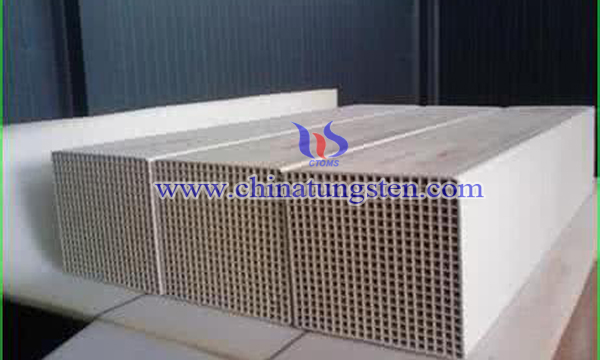Tungsten Recycle from Waste Catalyst
- Details
- Category: Tungsten Information
- Published on Wednesday, 28 August 2019 22:54
Nitrogen oxide pollution is becoming more and more serious. Coal-fired power plants are the largest source of air pollution in China. The state stipulates that the pollutant flue gas needs denitrification to meet the emission standards. SCR is the mainstream denitrification technology at home and abroad, accounting for more than 90% of the flue gas market, and is the most mature technology of flue gas denitrification.

The basic principle of SCR is that under the action of metal oxides, liquid ammonia or urea is used as reducing agent, and the nitrogen oxides are selectively reduced to form non-polluting nitrogen and water by using the flue gas temperature at the exit of the boiler at 280 450 ℃. The core of SCR process is catalytic technology, among which vanadium tungsten titanium based catalyst is the most widely used.
The tungsten recycle from waste catalyst can be carried out in the following ways. Firstly, the waste catalysts are simply cleaned to remove dust and other magazines attached to the surface. The acid oxides are salted by sodium roasting, and then vanadium and tungsten metal oxides are further separated by water extraction. Because of the high content and price of tungsten in waste catalyst, the tungsten recycle components is of great significance. Its specific operation includes the following process steps:
(1)Washing and grinding: Waste catalyst is washed with water or weak alkali solution to remove surface dust and particle impurities. After drying at 80 120 ℃, grinding and grinding to 100 300 mesh;
(2)Scraping: The spent catalyst obtained from the grinding process (1) is scorched at 600 800 ℃ for 2 5 h to remove organic matter and oxidize it sufficiently, and then mixed with sodium carbonate. The ratio of mixed quality is spent catalyst: sodium carbonate 1 20:1, grinded to 100 300 mesh and then burned at 600 800 ℃ for 6 10 h.
(3)Extraction: Steps (2) After immersion in water, the burnt waste catalyst is stirred for 3 to 6 hours at room temperature, filtered and extracted with extractive liquid. The extractive liquid is prepared by mixing N235 extractive liquid: secondary octanol: kerosene volume ratio is 1 to 2:1 to 2:7, and then used for volume calculation of the extractive liquid, the volume fraction is 15% to 30%, and the quality is good. The aqueous phase was obtained by stripping the organic phase with ammonia at the concentration of 10%-34.7%.
(4) Secondary scorching: Steaming and drying the aqueous phase obtained from the stripping of ammonia water and scorching the residue at 600 800 ℃ for 1 2 h to obtain yellow solid, which is the tungsten component recovered from the catalyst for selective catalytic reduction denitrification.
The above process can separate tungsten trioxide from other acidic metal oxides, selectively extract tungsten contained in the catalyst, without affecting the recycle of other metal elements, and basically achieve the recycle of tungsten components.
- Tungsten Manufacturer & Supplier, Chinatungsten Online: www.chinatungsten.com
- Tungsten News & Prices of China Tungsten Industry Association: www.ctia.com.cn
- Molybdenum News & Price: news.molybdenum.com.cn
- Tel.: 86 592 5129696; Fax: 86 592 5129797; Email: sales@chinatungsten.com



 sales@chinatungsten.com
sales@chinatungsten.com